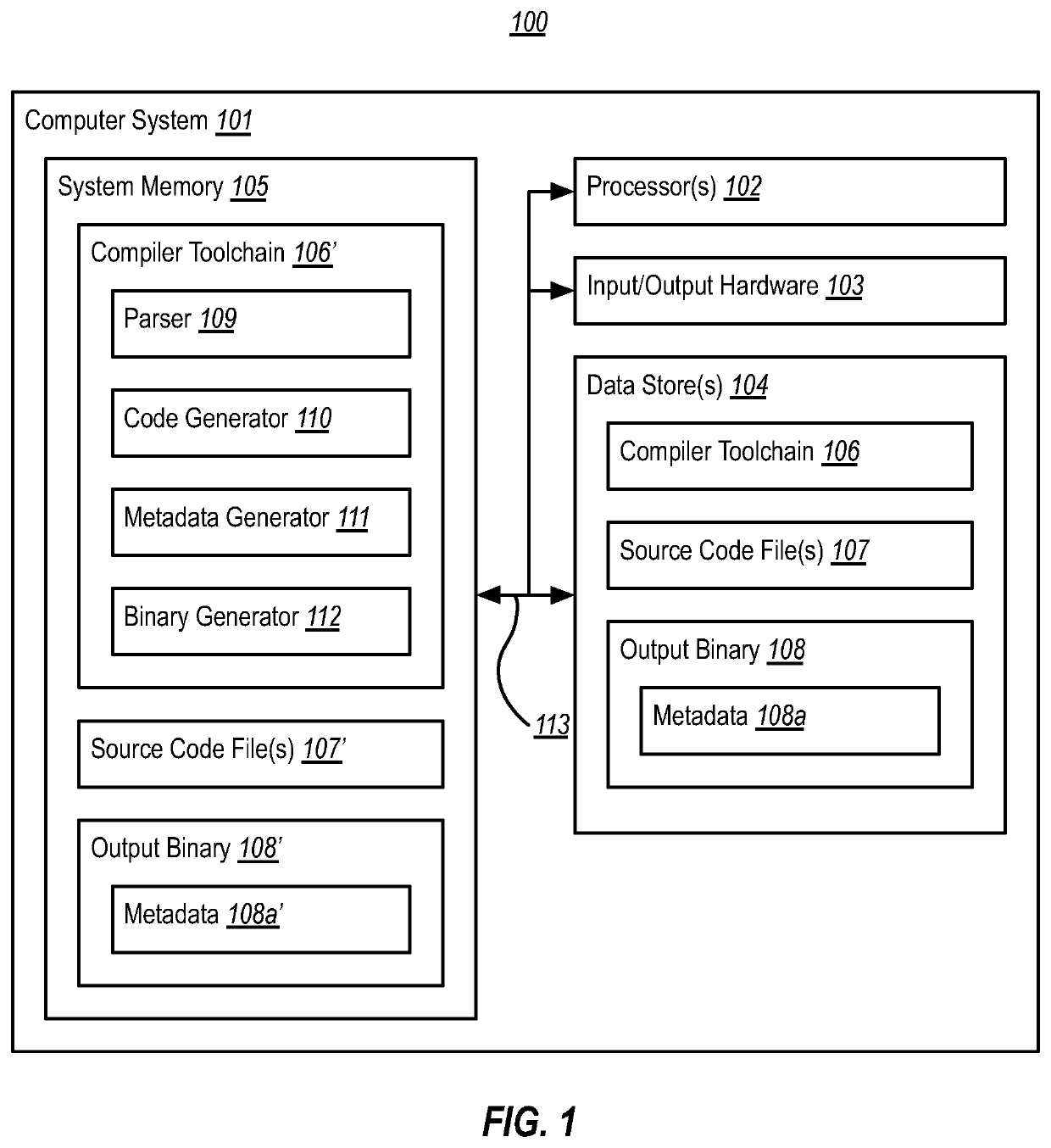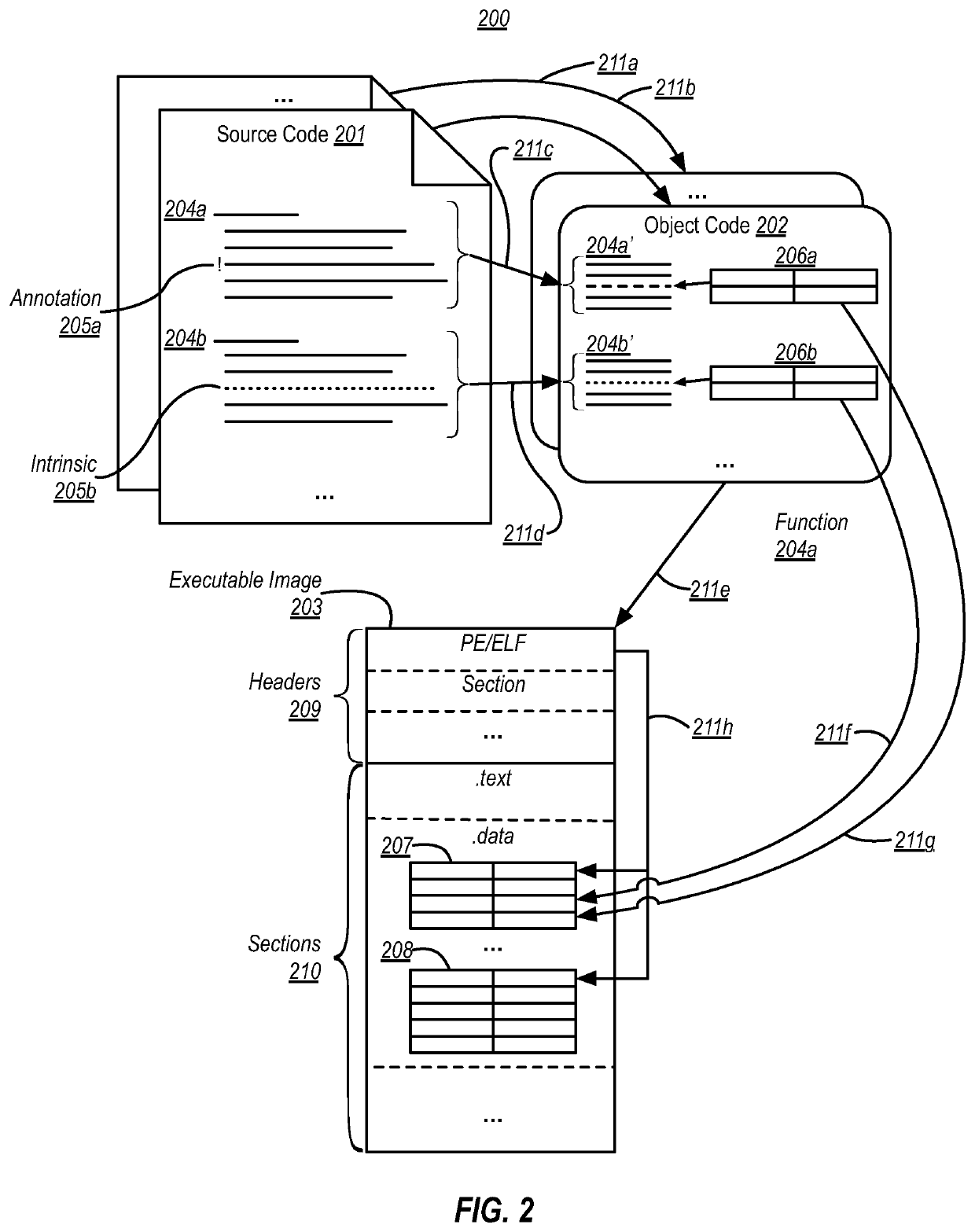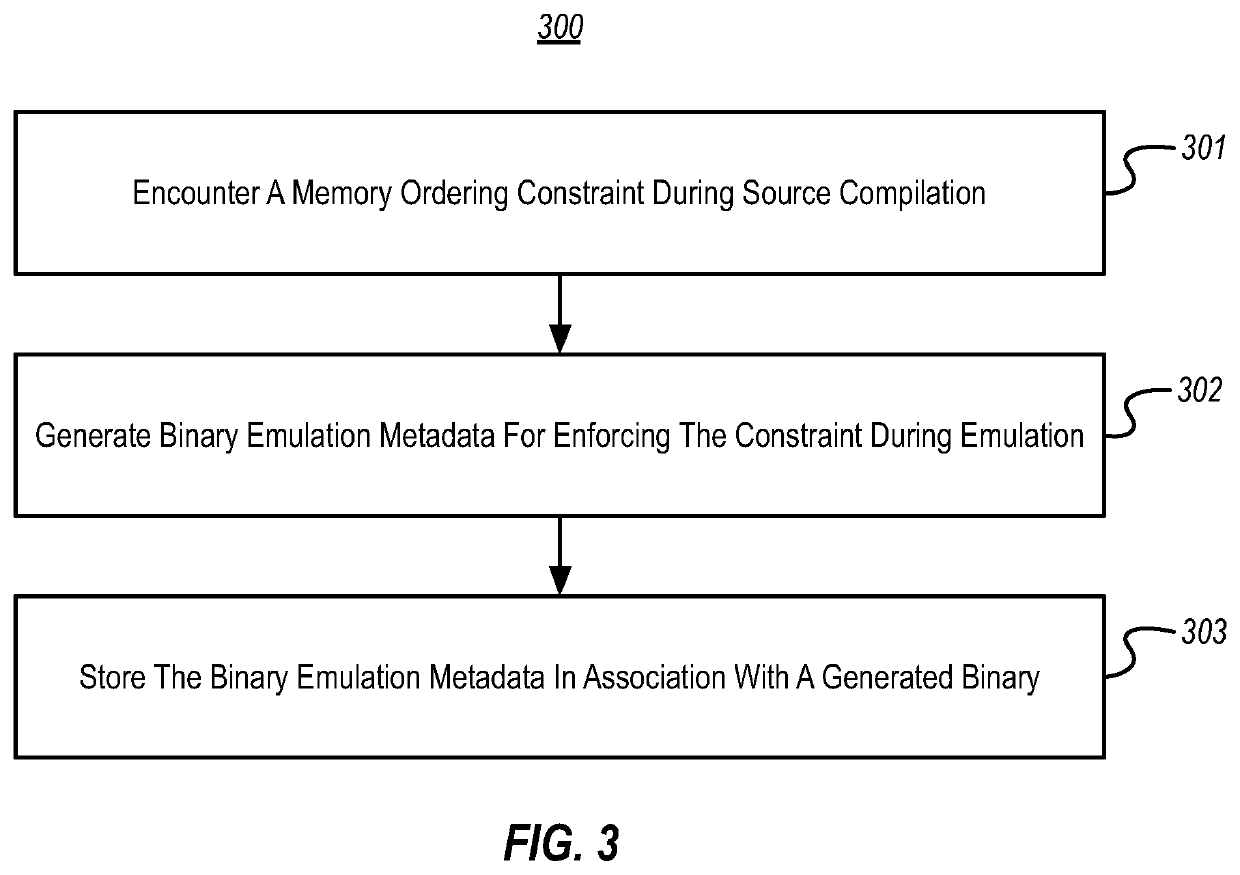Memory ordering annotations for binary emulation
a technology of memory ordering and binary emulation, applied in the direction of program code transformation, instruments, computing, etc., can solve the problems of binary emulation present significant challenges, loss of explicit memory ordering requirements conveyed by annotations, and difficulty in determining binary emulators
- Summary
- Abstract
- Description
- Claims
- Application Information
AI Technical Summary
Benefits of technology
Problems solved by technology
Method used
Image
Examples
Embodiment Construction
[0025]Binary emulation can present significant challenges, particularly when emulating execution of a binary that was compiled for a strongly-ordered ISA (e.g., such as an x86 ISA) on a target processor having a weakly-ordered ISA (e.g., such as an ARM ISA). When compiling source code to machine code instructions of a strongly-ordered ISA, compilers often rely heavily on the stricter ordering constraints of this strongly-ordered ISA. As such, these compilers often do not emit explicit machine code instructions corresponding to source code annotations that specify memory ordering constraints; instead, they often rely on the inherent acquire / release semantics of emitted machine code instructions that perform memory operations. This means that the explicit memory ordering requirements conveyed by these annotations are lost in the resulting strongly-ordered binary.
[0026]Later, when emulating execution of this strongly-ordered binary on a target processor, it is difficult for a binary em...
PUM
 Login to View More
Login to View More Abstract
Description
Claims
Application Information
 Login to View More
Login to View More - R&D
- Intellectual Property
- Life Sciences
- Materials
- Tech Scout
- Unparalleled Data Quality
- Higher Quality Content
- 60% Fewer Hallucinations
Browse by: Latest US Patents, China's latest patents, Technical Efficacy Thesaurus, Application Domain, Technology Topic, Popular Technical Reports.
© 2025 PatSnap. All rights reserved.Legal|Privacy policy|Modern Slavery Act Transparency Statement|Sitemap|About US| Contact US: help@patsnap.com



